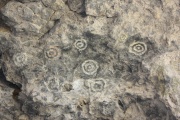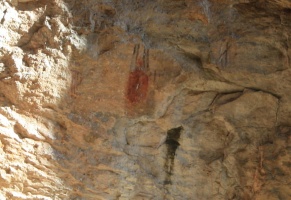Graffiti (Inventory)/Pictographs
From LagWiki
(More) |
(Added another image) |
||
| Line 6: | Line 6: | ||
For purposes of cave inventory, the definition of pictograph should be broadly construed to include similar artwork such as petroglyphs. Basically, any kind of symbolic artform on the rock is inventoried in this field. | For purposes of cave inventory, the definition of pictograph should be broadly construed to include similar artwork such as petroglyphs. Basically, any kind of symbolic artform on the rock is inventoried in this field. | ||
| + | |||
| + | <gallery caption="Gallery" perrow=1 widths=300px heights=200px> | ||
| + | File:Pictographs ochre.JPG|Pictographs | ||
| + | </gallery> | ||
{{Cave inventory}} | {{Cave inventory}} | ||
[[Category:Needs references]] | [[Category:Needs references]] | ||
Revision as of 00:59, 21 June 2012
The Pictographs field of the Graffiti section should be used to record stations where pictographs are observed.
A pictograph is a prehistoric drawing or form of symbolic artwork and can be found within caves. True pictographs are of significant cultural and anthropological importance. Pictographs are most often found in the twilight portion of caves, near the entrance; but due to changes or other events, they could be found almost anywhere. The observation of something that appears to be a pictograph should not be discarded because of its location. The symbolic artwork may or may not be recognizable and because of age, it may even be very hard to identify. Red ochre, yellow ochre, charcoal black and white are common colors in pictographs. The pigments were often made of whatever colorful material could be collected. All that remains of a pictograph may be a faded, color blotch on a wall, so observe carefully especially near an entrance.
For purposes of cave inventory, the definition of pictograph should be broadly construed to include similar artwork such as petroglyphs. Basically, any kind of symbolic artform on the rock is inventoried in this field.


